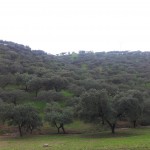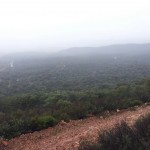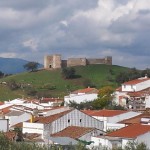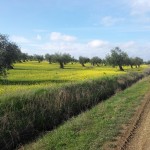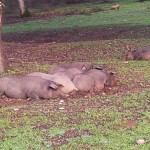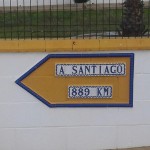Ruta de la Plata. Stretch 1 from Sevilla to Cáceres
1 pax min.
The origin of the Ruta de la Plata dates back to Roman times, as it was one of the Roman roads linking Astorga (Asturica Augusta ) in the north with Mérida (Augusta Emerita) in the south of the Iberian Peninsula. Today the route called Ruta de la Plata is the road connecting Sevilla with Gijón and the Camino de Santiago that comes from Cádiz to Santiago de Compostela, joining the Camino Francés in Astorga.
There is an alternative path called the Camino Sanabrés, which branches from the Vía de la Plata and arrives in Santiago de Compostela through the city of Orense in southern Galicia It is the best known and busy
On foot through the Via de la Plata to Santiago de Compostela
Stretch 1 From Sevilla to Cáceres, 288 km approx.
Program
Day 1: Arrival in Sevilla
Day 2: From Sevilla to Guillena, 23 km approx.
After a short tour around the historic center of Seville, we walk up to Triana to see the “Capilla del Cachorro” (chapel of El Cachorro), where there is one of the most important church brotherhoods of the Holy Week in Seville. We continue to Santiponce, built oover a Roman city. We see the cistercian monastery, San Isidoro del Campo and the ancient Roman city Italica. Then we continue to Guillena.
Day 3: From Guillena to Castilblanco de los Arroyos, 18 km approx.
Here begins the Andalusian grasslands and the oak forests inside a landscape in the middle of the nature. We walk for several hours through native vegetation, livestock and oaks fields. In Castiblanco de los Arroyos we can see the Baroque church of the Divine Savior.
Day 4: From Castilblanco to Almaden de la Plata, 30 km approx.
Today’s stage runs through a beautiful landscape full of oaks and lemon trees and strawberry fields. We also see pines and eucalyptus fields. In Almaden de la Plata we’ll its parish church from the 16th century. The council is located over the remains of an ancient Moorish castle.
Day 5: From Almaden de la Plata to El Real de la Jara, 14 km approx
Today we also have a beautiful walk between the nature. Real de la Jara is the last town within the province of Seville. It name comes from the times of the Catholic Monarchs. The iconic building is the Castillo (Castle). Also interesting is the church of San Bartolomé in Arabian style.
Day 6: From El Real de la Jara to Monesterio, 21 km approx.
We are already in Extremadura and we walk once more through beautiful landscapes with oaks and eucalyptus. Monesterio is the “Curiga” (a roman city within the Bética province) from the Roman times. We’ll also visit the church of San Pedro from the 15th century.
Day 7: From Monesterio to Fuente de Canos, 21 km approx.
Along today’s stage we’ll first see many oak forests. Then comes a plain with meadows and cereal crops. Fuentes de Cano is the home town of Zurbaran, the famous Spanish painter of the 17th century. We can visit the museum house of the painter and the parish church
Day 8: From Fuentes de Cano to Zafra, sobre 26 km
We leave behind the oak forests and keep on walking through fertile plains where olive trees, vineyards and cereals nicely sketch our way. First we get to Calzadilla de los Barros. The church of Salvador has a beautiful altarpiece by Anton de Madrid, an example of the Gothic painting in Extremadura. In Puebla de Sancho Pérez we can visit the collegiate church of Nuestra Señora de Belén. We arrive in Azofra, one of the most important cities of Extremadura. Following a walk of the city, we can visit the church of La Candelaria and the City Council.
Day 9: From Zafra to Villafranca de los Barros, 21 km approx.
Fields of cereals and vineyards also fill our camino today. On the way to Villafranca de Barros we’ll just see one village, Los Santos de Maimona, a great village among a landscape of fertile plain.
Day 10: From Sobrado de los Monjes to Arzúa, 22 km approx.
Along today’s stage we won’t pass through any village. The path goes along agricultural lands following a Roman road.
Day 11: From Almendralejo to Merida, 30 km approx.
In Torremejía we can visit the Baroque church of La Purísima. Then we walk to Emérita Augusta (Mérida) to visit this city,”the little Roma”,
Day 12: From Merida to Alcuescar Walk to Alcuescar, 24 km approx
Along our way we’ll pass through the village of Aljucen.
Day 13: De Alcuescar a Aldea del Cano, 16 km approx.
From Alcuescar we walk to Casas de Don Antonio in Roman style as well as the stone bridge. In Aldea del cano we visit the parish church with its “Atalaya” (watchtower,typical from south Spain)
Day 14: From Aldea del Cano to Cáceres, 24 km approx.
In Aldea del Cano tobacco,corn and woll were formerly grown. Through the village of Valdesalor we reach Caceres, the “Castra Caecilia.” Walk through the old town.Visit to the Plaza Mayor and the Gothic church of San Juan Bautista.
Day 15: End of the trip
*There is the possibility to extend the stay in Cáceres, if you are interested in it please don,t hesitate to contact Viajes Orbis. When extending your stay, apart from enjoying the city, we can arrange some excursions.
*It is also possible to combine various trips, e.g. follow the Way of Saint James to Burgos, Astorga or until Santiago..









